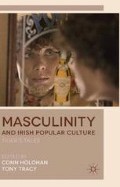Abstract
Pure Mule is a six-part TV series produced by Accomplice Television and RTÉ and screened by the national broadcaster as part of RTÉ’s autumn schedule in 2005. Written by Eugene O’Brien, it is a contemporary drama set (like O’Brien’s 2004 play Eden and its subsequent film adaptation) in a ‘typical’ small town in the author’s native midlands; a landscape void of notable landmarks or ‘heritage’ and a setting rarely invoked in Irish screen culture. Each of the six, (roughly) 50-minute episodes is structured by the narrative and point of view of one individual over the course of one given weekend out of six. Each episode is identified by the name of its primary character. The series takes place against a backdrop of the Celtic Tiger construction boom, with most of the male protagonists working as builders on a new estate that will greatly extend and impact upon the town and its population. In spite of the occasional intervening construction subplot, the emphasis of the six narratives is on leisure rather than labour time. This facilitates an emphasis on the characters’ hedonistic lifestyles that revolve around heavy drinking, drug-taking, casual sexual encounters and occasional physical violence.
Access this chapter
Tax calculation will be finalised at checkout
Purchases are for personal use only
Preview
Unable to display preview. Download preview PDF.
Notes
Robert Warshow, ‘Movie chronicle: the Westerner’ in Gerald Mast, Marshall Cohen and Leo Braudy (eds), Film Theory and Criticism (4th edn, Oxford: Oxford University Press, 1992), 455.
Jim Kitses, ‘The Western: ideology and archetype’ in Jack Nachban (ed.), Focus on the Western (New Jersey: Prentice-Hall, 1974), 65.
Jim Kitses, Horizons West: directing the Western from John Ford to Clint Eastwood (London: BFI, 2004), 30.
William Trevor, ‘The Ballroom of Romance’, in Collected Stories (London: Penguin, 1992), 189–90.
Julie D’Acci, ‘Television, representation and gender’, in Robert C. Allen and Annette Hill (eds), The Television Studies Reader (London: Routledge, 2004), 384.
Lance Pettitt, Screening Ireland: Film and Television Representation (Manchester: Manchester University Press, 2000), 176.
Debbie Ging, Men and Masculinities in Irish Cinema (London: Palgrave Macmillan, 2013), 37.
See, most relevantly, Jean Paul Sartre, Being and Nothingness: An Essay on Phenomenological Ontology (London: Routledge, Routledge Classics, 2003), 70–94.
Hamilton Carroll. ‘Second acts: masculinity in crisis and the recessionary imaginary’, in Diane Negra and Yvonne Tasker (eds), Gendering the Recession (Durham: Duke University Press, 2013).
Quoted in Diane Negra, ‘Irishness, anger and masculinity in recent film and television’, in Ruth Barton (ed.), Screening Irish-America: Representing Irish-America in Film and Television (Dublin: Irish Academic Press, 2009), 289.
Editor information
Editors and Affiliations
Copyright information
© 2014 Barry Monahan
About this chapter
Cite this chapter
Monahan, B. (2014). Pure Male: Masculine Spaces and Stasis in Eugene O’Brien’s Pure Mule (2005). In: Holohan, C., Tracy, T. (eds) Masculinity and Irish Popular Culture. Palgrave Macmillan, London. https://doi.org/10.1057/9781137300249_16
Download citation
DOI: https://doi.org/10.1057/9781137300249_16
Publisher Name: Palgrave Macmillan, London
Print ISBN: 978-1-349-45307-8
Online ISBN: 978-1-137-30024-9
eBook Packages: Palgrave Media & Culture CollectionLiterature, Cultural and Media Studies (R0)

